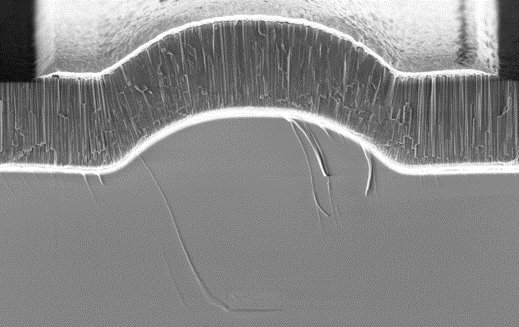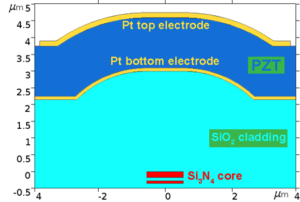Ultra-low power, high speed stress-optic actuators for silicon nitride PICs
Improvements in speed and power consumption promise new applications for reconfigurable low-loss PICs.
Last month LioniX International published results demonstrating ultra-low power, high-speed actuators for low-loss silicon nitride Photonic Integrated Circuits (PICs). The stress-optic actuators show actuation speeds down to 4.25 μs and power consumption of less than 1 μW in quasi-DC operation. The technology is commercially available, enabling a scalable solution to on-chip actuation and opening up new applications for low-loss reconfigurable PICs.
The technology demonstrated novel use of a piezo-electric material, lead zirconate titanate – PZT, deposited in wafer level processes above the waveguide. A voltage applied to the piezo layer induces stress in the waveguide below, resulting in rapid a phase shift in the optical signal.
Until recently, passive silicon nitride PICs lacked a scalable solution for the integration of fast modulators and actuators at wafer level. This is a vital capability for large scale roll out of advanced functionality used in transducers, phased arrays and high speed reconfigurable PICs. Previous solutions have included the use of optically lossy electro-optic materials and power-hungry thermo-optic actuation using metal heaters.
Above: stress-optic actuator layer fabricated from piezo material. Stress is induced in the waveguide below.
However, the stress-optic method detailed in LioniX’s latest publication offers a 50 times increase in actuation speed and 100,000 times reduction in power consumption when compared to heater-based actuation, with very low excess optical loss.
Now, with drastic improvements in performance and power consumption Lionix International is busy integrating the wafer-level technology for existing developments as well as eying up new applications. An immediate beneficiary is LioniX’s high capacity broadband beamforming matrices for microwave communications. Similarly, high speed swept lasers and optical phased arrays are an obvious targets for near-future developments.



